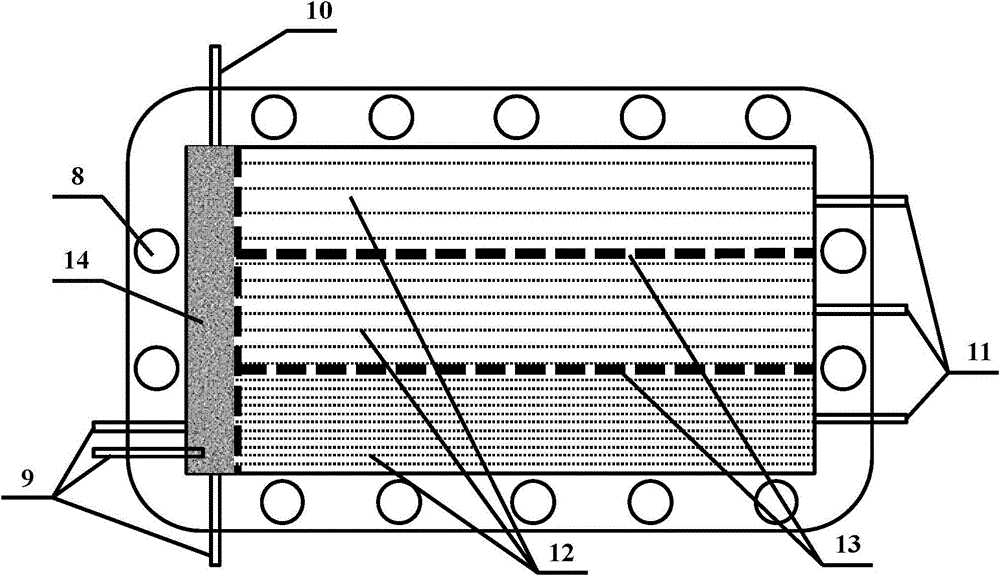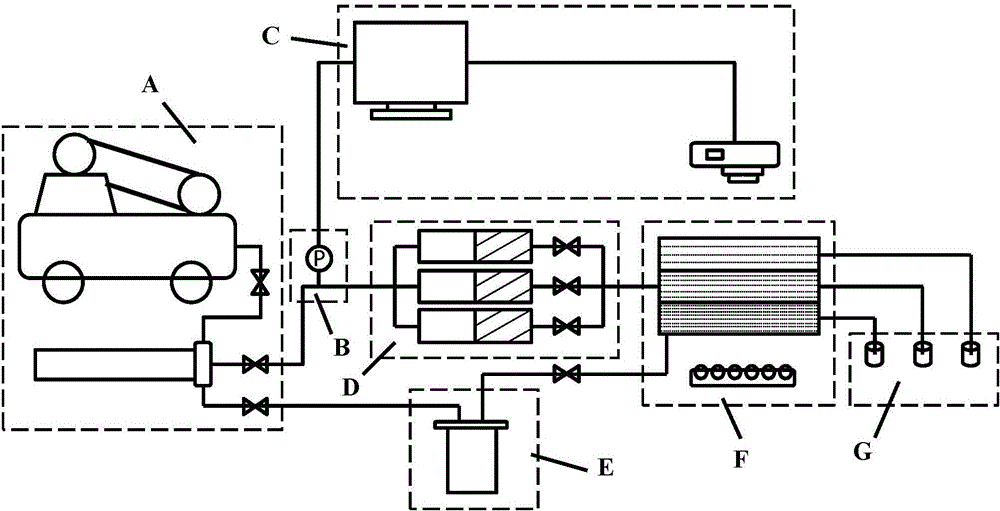Two-dimensional visual percolation experiment method capable of simulating in-layer heterogeneity
A technology of heterogeneity and experimental method, applied in the direction of permeability/surface area analysis, measuring device, suspension and porous material analysis, etc., can solve the problem of inability to reflect the seepage law of the oil displacement system, low oil content near the wellbore, and flow velocity Slow and so on
- Summary
- Abstract
- Description
- Claims
- Application Information
AI Technical Summary
Problems solved by technology
Method used
Image
Examples
Embodiment Construction
[0041] The experimental methods used in the following examples are conventional methods unless otherwise specified.
[0042] The materials and reagents used in the following examples can be obtained from commercial sources unless otherwise specified.
[0043] Such as figure 1 and figure 2As shown, it is a two-dimensional visible sand filling model used in the method of the present invention to simulate layer heterogeneity, which includes a bottom plate 1 and a cover plate 2, both of which are rectangular PMMA panels. The base plate 1 and the cover plate 2 are tightly fitted by bolts (the threaded hole 8 is provided on the base plate 1). A sealing ring 4 is provided between the base plate 1 and the panel 2 in order to make the two seal fit.
[0044] Such as figure 1 As shown, a sealing rubber pad 5 is provided between the bottom plate 1 and the cover plate 2, a confining pressure chamber 6 is formed between the sealing rubber pad 5 and the cover plate 2, and a filling spac...
PUM
| Property | Measurement | Unit |
|---|---|---|
| viscosity | aaaaa | aaaaa |
Abstract
Description
Claims
Application Information
 Login to View More
Login to View More - R&D
- Intellectual Property
- Life Sciences
- Materials
- Tech Scout
- Unparalleled Data Quality
- Higher Quality Content
- 60% Fewer Hallucinations
Browse by: Latest US Patents, China's latest patents, Technical Efficacy Thesaurus, Application Domain, Technology Topic, Popular Technical Reports.
© 2025 PatSnap. All rights reserved.Legal|Privacy policy|Modern Slavery Act Transparency Statement|Sitemap|About US| Contact US: help@patsnap.com



